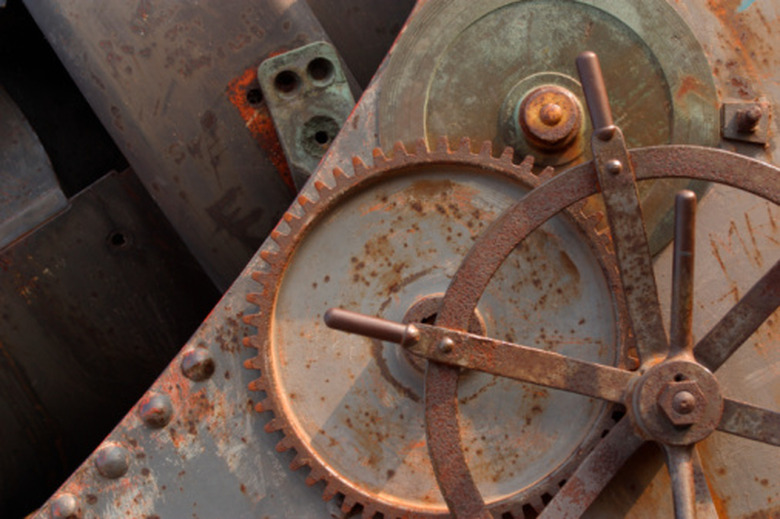Machines That Use Kinetic Energy
All types of machines with moving parts use kinetic energy. Moving parts, no matter how complex, are a combination or a series of simple machines. Simple machines are often used to multiply the amount of the initial effort exerted or to change the direction of a force. Simple machines using kinetic energy include the lever, pulley, inclined plane and the wheel and axle.
Levers
Levers
Levers allow us to lift heavy weights without too much effort by multiplying the force we apply through simple mechanical advantage. It requires kinetic energy to function because levers will not be able to move objects unless an outside force moves them. Simple levers have two parts: the fulcrum and the handle.
There are three classes of levers depending on where the load and fulcrum are located and where the initial force is applied: first, second, and third class. On a first-class lever, the fulcrum is on the middle of the effort and load. On a second-class, the effort is on the middle of the load and the fulcrum. On a third-class, the load is in the middle of the effort and the fulcrum.
Pulley
Pulley
A pulley is a simple machine made of a wheel and rope. Like a lever, it requires kinetic energy to function. Pulleys are often used to change the direction of a force you need to apply to move an object. For example, you can pull down on the rope of a pulley to lift an object, instead of lifting the object itself. There are three types of pulleys: fixed, movable and compound. Fixed pulleys only change the direction of the force, while movable pulleys can multiply the force you apply. Compound pulleys are a combination of a fixed and a movable pulley.
Inclined Plane
Inclined Plane
An inclined plane lets you easily move heavy objects to a higher elevation, but the object being moved needs an initial source of kinetic energy to start moving. An inclined plane has two endpoints that differ in height. You can easily move an object from the lower point to the higher one because the initial kinetic energy needed to "lift" the object is reduced. This doesn't mean the force you will spend is less, because inclined planes only distribute the amount of force needed by creating a longer line of travel, instead of just lifting the object.
Wheel and Axle
Wheel and Axle
A wheel and axle is a combination of two circular objects that have different sizes. The wheel is the larger object, and the axle is the smaller one located in the middle of the wheel. Axles can be fixed or moving, depending on the application. Although a wheel and axle can multiply the amount of work exerted on it, it still needs a push or kinetic energy in order to move. For example, a cyclist needs to pedal in order for the bicycle to move.
Cite This Article
MLA
Johnson, Steve. "Machines That Use Kinetic Energy" sciencing.com, https://www.sciencing.com/machines-use-kinetic-energy-8461127/. 24 April 2017.
APA
Johnson, Steve. (2017, April 24). Machines That Use Kinetic Energy. sciencing.com. Retrieved from https://www.sciencing.com/machines-use-kinetic-energy-8461127/
Chicago
Johnson, Steve. Machines That Use Kinetic Energy last modified March 24, 2022. https://www.sciencing.com/machines-use-kinetic-energy-8461127/
